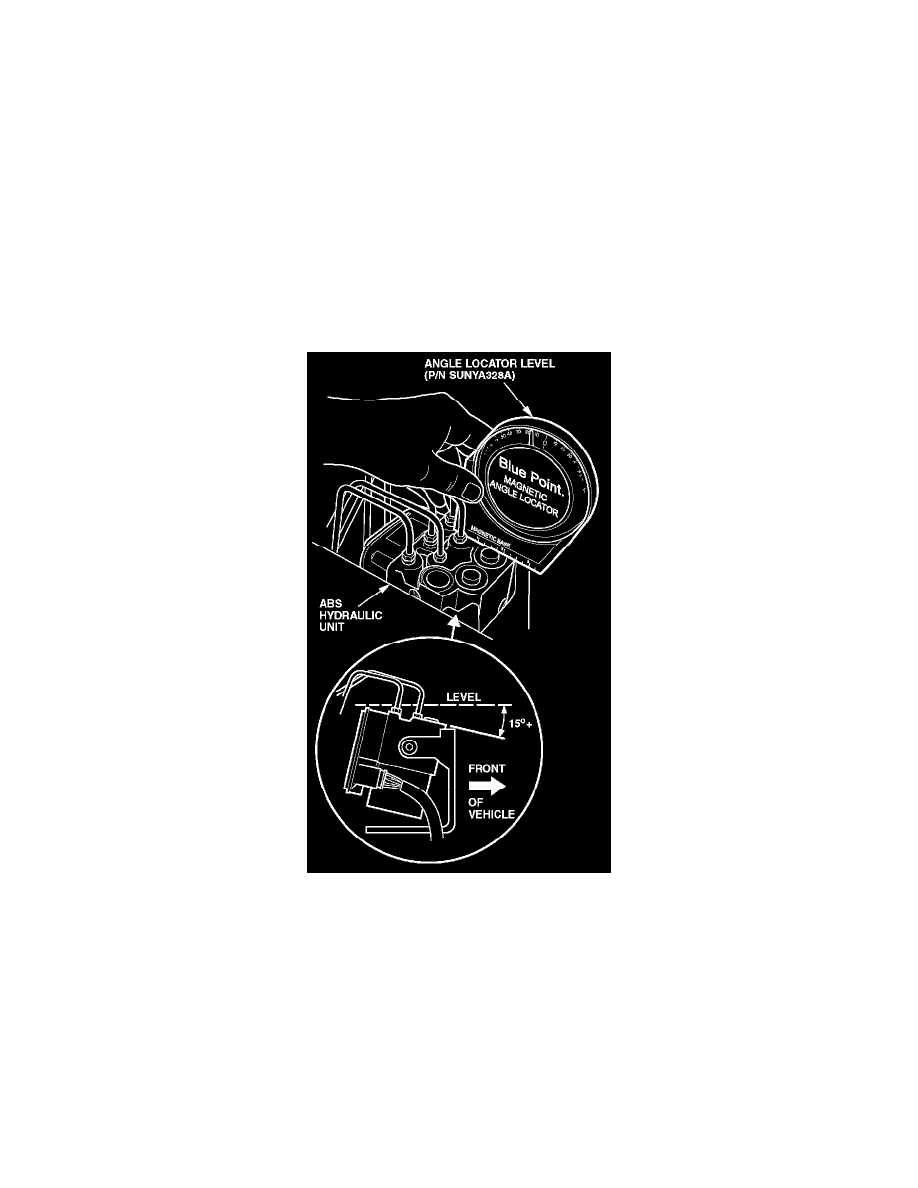Passport LX 4WD V6-3165cc 3.2L DOHC MFI (2001)

Brake Bleeding: Service and Repair
Bleeding Brake Hydraulic System
This procedure has been updated by TSB Manual Update # 01-016
dated January 30, 2001.
BLEEDING BRAKE HYDRAULIC SYSTEM
A bleeding operation is necessary to remove air from the hydraulic brake system whenever air is introduced into the hydraulic system. It may be
necessary to bleed the hydraulic system at all four brakes if air has been introduced through a low fluid level or by disconnecting brake pipes at the
master cylinder. If a brake pipe is disconnected at one wheel, only that wheel cylinder/caliper needs to be bled. If the pipes are disconnected at any
fitting located between the master cylinder and brakes, then the brake system served by the disconnected pipe must be bled.
1. For 4-Wheel Antilock Brake System (ABS) equipped vehicle, be sure to remove the ABS main fuse 60A located at the relay and fuse box before
bleeding air. If you attempt to bleed air without removing the main fuse, air cannot be let out thoroughly, and this may cause damage to the
hydraulic unit. After bleeding air, be sure to replace the ABS main fuse back to its original position.
2. Set the parking brake completely, then start the engine.
NOTE: The vacuum booster will be damaged if the bleeding operation is performed with the engine off.
NOTE: To avoid trapping air bubbles in the ABS hydraulic unit while bleeding the brakes, the hydraulic unit must be tilted forward at a
15-degree angle or greater. Before bleeding, check the angle of the ABS hydraulic unit with an angle locator level. If needed, raise the rear of the
vehicle to get the proper angle.
The angle locator level (P/N SUN-YA328A) is available through the Honda Tool and Equipment Program.
3. Remove the master cylinder reservoir cap.
4. Fill the master cylinder reservoir with brake fluid. Keep the reservoir at least half full during the air bleeding operation.
5. Always use new brake fluid for replenishment.
6. When replenishing the brake fluid reservoir, carefully pour in the brake fluid to prevent air bubbles from entering the brake system. When the
master cylinder is replaced or overhauled, first bleed the air from the master cylinder, then from each wheel cylinder and caliper following the
procedures described.
Bleeding the Master Cylinder
7. Disconnect the rear wheel brake pipe (1) from the master cylinder. Check the fluid level and replenish as necessary. If replenished, leave the
